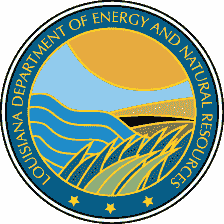Oilfield Restoration Commission
State's Oilfield Waste Testing Program Takes Effect
-- Gov. Foster's Quest for Tougher Regulations Is Now Law --
The state Department of Natural Resources's Office of Conservation announced today that major amendments to the state's oilfield waste storage, treatment and disposal rules are now in effect.
With Governor Mike Foster's 1997 directive to review the state's exploration and production waste regulations and with many long hours of scientific analysis of waste types, the Conservation office issued twelve emergency rules leading to this final proposal, DNR officials said. The regulation for oilfield waste treatment and disposal is contained in Statewide Order No. 29-B.
DNR Secretary Jack Caldwell said, "the new rule provides additional safeguards to ensure the health and safety of our citizens, particularly by setting increased buffer zones near waste facilities and by testing certain waste." He said the new requirements are science-based and are the best in the United States. Secretary Caldwell, Assistant Conservation Commissioner Phil Boudreaux, and DNR Injection and Mining Director Carroll Wascom appeared before the legislative House Committee on Natural Resources yesterday to explain the changes to Statewide Order No. 29-B and the new testing requirements for industry.
Asst. Commissioner Boudreaux acknowledged the expertise of highly qualified contractors including Louisiana State University professors Dr. James Wharton, Dr. Danny Reible and Dr. K.T. Valsaraj as well as toxicologist Dr. Ben Thomas of RAM Group, Inc. of Houston for their work and dedication to the scientific processes involved in reaching solid conclusions to help formulate the rule.
Louisiana is now the first oil and gas producing state to have conducted a comprehensive waste evaluation and health risk analysis of oilfield waste managed at commercial facilities. As a result, operators of commercial facilities in the state are obligated to adhere to the new regulations.
•Generators will be required to characterize the exploration and production (E&P) waste they generate.
•Generators of E&P waste will be allowed the option to treat and/or dispose of their waste at state permitted commercial facilities or Department of Environmental Quality (DEQ) permitted facilities as defined in provisions of state law.
• Under the location criteria amendments of state law, commercial facilities may not be located:
- within one-quarter mile of a public water supply well, within 1,000 feet of a private water supply well or within a DEQ designated source water protection or wellhead protection area for facilities permitted after January 1, 2002
- where Type A and B facilities, Class II disposal wells, commercial facility storage containers, waste treatment facilities and related equipment, are located within 500 feet of a residential, commercial, or public building, church, school or hospital
- where the perimeter of any Type A land treatment cell is located within restricted distances from a residential or public building, church, school, or hospital for treatment of waste
(A Type A facility is a commercial E&P Waste disposal facility that utilizes technologies appropriate for the receiving, storage, treatment or disposal of E&P waste solids and fluids. A Type B facility is a commercial E&P Waste disposal facility that utilizes underground injection technology for the storage, treatment, and disposal of only saltwater or other E&P waste fluids.)
• Commercial land treatment facilities may not receive, store, treat, or dispose of gas plant waste that exceeds the maximum permissible concentration (MPC) criteria of 3,198 mg/kg for total benzene.
• All commercial facility operators will be required to submit and maintain a detailed Waste Management and Operations Plan.
• The Office of Conservation can refuse to issue, reissue or reinstate a commercial facility permit or authorization to any individual, partnership or other entity which has been found to have violated Statewide Order No. 29-B or has other violations which include failure to properly close any oil, gas or commercial facility or site, failure to pay fees, or failure to pay assessed civil penalties.
The final rule (Statewide Order No. 29-B) in its complete text can be found on the Internet at http://www.dnr.state.la.us/cons/final-ep-rule.pdf
(Editors: For more information on this topic, contact the DNR Public Information Officer Phyllis Darensbourg at 225-342-8955.)
News Archives »